By Renu Bala and Shivam Malvi
Introduction
Under the Designs Act, 2000 (herein referred as the Act), the concept of “prima facie validity” plays a vital role in determining interim protections during legal disputes. Indian courts deal with prima facie validity as a starting point where evidence such as a registered design certificate is accepted as valid unless disproved by stronger contrary conclusive evidence.
Prima facie validity gives the registered design owner a legal presumption of originality and ownership and this presumption can be overturned if the opposing party submits conclusive proof of prior art, obvious similarity or any other reason that invalidates the design.
The recent cases Sirona Hygiene[1], TTK Prestige[2] and Diageo Brands[3] exhibit how courts apply prima facie validation to registered designs in Intellectual Property disputes, demonstrating the power and limits of registration protection.
Design and Validity of Design
A “design”, as defined under Section 2 (d)[4] of the Act, encompasses the features of shape, configuration, pattern, ornament or composition of lines/ colours applied to any article through an industrial process. These features must appeal solely to the eye (also known as the eye to eye test/ ocular test) and not contain functional components like mechanical devices, trademarks or artistic work as the objective behind the same is to safeguard aesthetic innovations that boost an article’s visual appeal.
“Validity of design” pertains to whether a registered design meets the statutory requirements for protection, such as being new or original (not previously published or lacking substantial novelty), significantly distinguishable from prior art and not dictated solely by function. Registration grants a monopoly, but validity is rebuttable; courts assert it prima facie at interim stages to decide on injunctions, balancing the proprietor’s rights against potential invalidity challenges like prior publication or lack of originality.
Prima Facie Evidence- How It Powers Design Disputes In Court?
In Sirona Hygiene v. Amazon Seller Services[5],
- The Plaintiff, Sirona Hygiene, owned a registered design for a disposable female urination device called “PEE BUDDY”. The company alleged that various sellers on Amazon, including the Defendant under the brand “NAMYAA”, produced and sold nearly identical devices, infringing the Plaintiff’s registered design. Physical samples of both Sirona’s product and the defendant’s allegedly infringing product were presented to the court for comparison which are attached below:
| Plaintiff’s Registered Design No. 263764(PEE BUDDY) | Defendant’s Product (NAMYAA) |
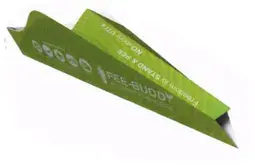 |
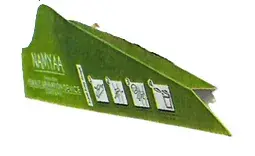 |
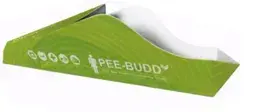 |
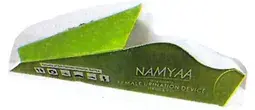 |
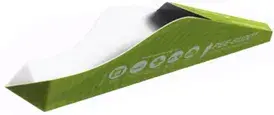 |
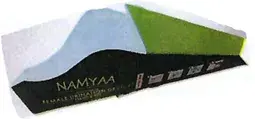 |
- The main issue involved prima facie validity of the plaintiff’s design, whether the defendant’s product infringes on Sirona’s registered design or not. To this Sirona contented that the defendant copied its design outright, asserting that the registration certificate alone proved prima facie validity of their design rights. The defendant contented that Sirona’s design lacked novelty and originality, citing a prior US product called “P-MATE” and an obscure Indian design arguing that Sirona’s design was merely a trade variant.
- The court found significant differences between Sirona’s design and prior art, dismissing the claim that it was a mere trade variant. The court held the registration as strong prima facie evidence of validity and granted an injunction against the Defendant, restraining further manufacture and sale of the pirated design.
TTK Prestige Ltd. v. KCM Appliances Private Ltd[6],
- The Plaintiff owned a registered pressure cooker design and sued the Defendant for selling similar cookers, alleging infringement and seeking injunction. The Plaintiff (TTK Prestige) registered a design for its “Svachh Deluxe Alpha” (Design no. 324727-001) pressure cooker lid, featuring a distinct circumferential depression and raised wall to control spillage and for aesthetic purposes. Plaintiff’s alleged that the Defendant’s (KCM Appliance) “Implex Delight Virgin Aluminum Dripless Pressure Cooker” copied this design and the Defendant disputed the claim and argue design differences and the same is attached below:
| PLAINTIFF’S REGISTERED DESIGN NO. 324727-001 | DEFENDANT’S PRODUCT |
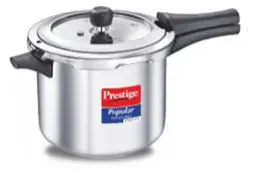 |
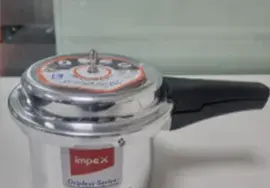 |
- The main issues revolved whether KCM’s pressure cooker lid design was a fraudulent or obvious imitation of TTK’s registered design and whether TTK’s design is prima facie original and novel. The Plaintiff’s argued that their design had a distinctive circular depression and raised wall on the lid which provided both functional advantages like the spillage control, etc. and eye appeal, qualifying as a valid design.
- Whereas the Defendant’s contented that a YouTube video posting prior to registration counted as prior publication thereby invalidating the novelty and further contented that the design was essentially functional and that design protection should not be extended to features dictated by utility.
- The Delhi High Court carefully examined the products, video evidence and registration scope and held that the design showed unique visual characteristics beyond purely functional features and was distinct from prior art to be valid. The court upheld the prima facie validity given by the registration certificate, rejecting the objections based on prior disclosure and found infringement by KCM. The judgement affirmed that registration protects a design’s visual appeal even if it has functional elements.
In Diageo Brands B.V. & Anr. v. Great Galleon Ventures Ltd[7].,
- In this dispute, Diageo Brands (the Plaintiff), the registered proprietor of the bottle design “Hipster” (Design no. 306577), claimed that Great Galleon’s 180ml bottle was a fraudulent imitation of its distinctively shaped product which was inspired by smartphone proportions and featuring unique design traits such as rounded shoulders, a v-shaped neck and a dimpled bottom and comparison of both as attached below:
| PLAINTIFF’S REGISTERED DESIGN NO. 306577 | DEFENDANT’S PRODUCT |
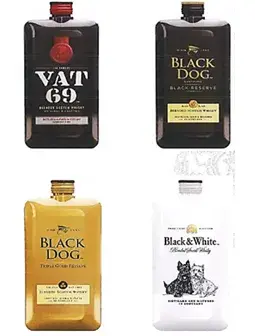 |
 |
- The main issue revolved around whether Diageo was the true proprietor and whether the design registration carried prima facie validity and if the design was liable to be cancelled due to lack of novelty, originality or functionality. The plaintiffs argued that their design was not only new but also gained considerable goodwill and reputation and further emphasized that the defendant’s actions diluted their market position and consumer goodwill amounting to design piracy and passing off. Whereas the defendant’s challenged the validity of plaintiff’s design registration, asserting that it lacked novelty and originality as it drew from common hip flask shapes and was functionally dictated.
- The court held that the Plaintiff, Diageo Brands, was the lawful proprietor of the registered design No. 306577 under the Act and it was stated that the creation of the design by an external agency (Love Creation) does not detract from the Plaintiff’s proprietary rights as the design was created by them, satisfying the requirements of Section 2 (j)[8] of the Act. The court further emphasized that registration of a design does not constitute prima facie evidence of its validity. Unlike trademarks, design registration is subject to post-registration challenges and cancellation proceedings. Nevertheless, it was held that a validly registered design confers exclusive rights to the proprietor, entitling them to seek injunctive relief if a prima facie case of infringement is established. Consequently, the court granted an injunction in favour of the plaintiff, restraining the defendants from using the infringing bottles.
Conclusion
Hence, it can be said that design registration is recognized as prima facie proof of validity by Indian courts. This means that, at first glance and in absence of conclusive evidence, a registered design is presumed to be valid and original. Such registration provides a critical legal presumption which empowers innovators to protect their design effectively. On the other hand, design registration, while generally providing a presumptive right to the holder, may be invalidated if evidence is presented demonstrating that the design similar to registered design, was already within the public domain prior to the date of registration.
Finally, as per the court’s decision in cases like Sirona Hygiene[9], TTK Prestige[10] and Diageo Brands, [11]rely on registration of the design and considering design registration as a fundamental element in prima facie design protection.
Anoushka Keswani, Legal intern at S.S.Rana & Co. has assisted in the research of this article.
[1] Sirona Hygiene v. Amazon Seller Services, CS (COMM) 503/2022.
[2] TTK Prestige Ltd. v. KCM Appliances Private Limited, 2023 SCC OnLine Del 2129.
[3] Diageo Brands B.V. & Anr. v. Great Galleon Ventures Ltd., CS(COMM) 87/2021.
[4] The Designs Act, No. 16 of 2000, § 2(d)-“ ‘design’ means only the features of shape, configuration, pattern, ornament or composition of lines or colours applied to any article whether in two dimensional or three dimensional or in both forms, by any industrial process or means, whether manual, mechanical or chemical, separate or combined, which in the finished article appeal to and are judged solely by the eye; but does not include any mode or principle of construction or anything which is in substance a mere mechanical device, and does not include any trade mark as defined in clause (v) of sub-section (1) of section 2 of the Trade and Merchandise Marks Act, 1958 (43 of 1958) or property mark as defined in section 479 of the Indian Penal Code (45 of 1860) or any artistic work as defined in clause (c) of section 2 of the Copyright Act, 1957 (14 of 1957)..”.
[5] Sirona Hygiene v. Amazon Seller Services, CS (COMM) 503/2022.
[6] TTK Prestige Ltd. v. KCM Appliances Private Limited, 2023 SCC OnLine Del 2129.
[7] Diageo Brands B.V. & Anr. v. Great Galleon Ventures Ltd., CS(COMM) 87/2021.
[8] The Designs Act, No. 16 of 2000, § 2 (j)- proprietor of a new or original design— “(i) where the author of the design, for good consideration, executes the work for some other person, means the person for whom the design is so executed; (ii)where any person acquires the design or the right to apply the design to any article, either exclusively of any other person or otherwise, means, in the respect and to the extent in and to which the design or right has been so acquired, the person by whom the design or right is so acquired; and (iii) in any other case, means the author of the design; and where the property in or the right to apply, the design has devolved from the original proprietor upon any other person, includes that other person”.
[9] Sirona Hygiene v. Amazon Seller Services, CS (COMM) 503/2022.
[10] TTK Prestige Ltd. v. KCM Appliances Private Limited, 2023 SCC OnLine Del 2129.


